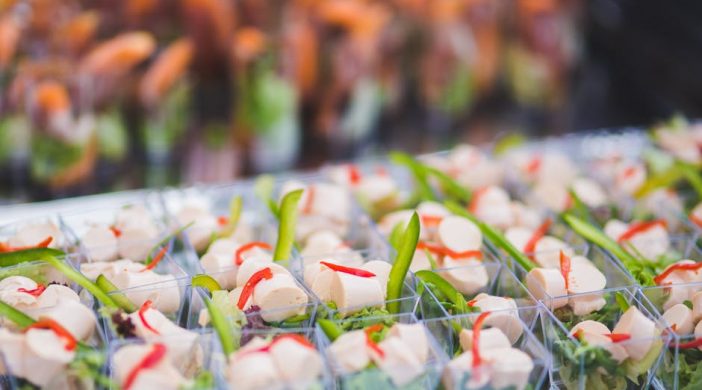
The simplest way to avoid meat and animal products is to eat foods that don’t contain any, such as fruits, vegetables, beans, and legumes. Things may get tricky when it comes to other foods because many vegetarian-looking meals do contain animal ingredients and their byproducts. However, there are several things you do to tackle this issue.
Pay attention to hidden animal ingredients. Some of these ingredients are present in very small amounts, especially when it comes to product derivatives such as casein, whey, and others. In some instances, you won’t be able to identify the source of an ingredient from a label. Unless the label says that the food is vegan or vegetarian, you may need to contact the manufacturer for more information.
Don’t be afraid to contact food companies. Most big food companies list their phone numbers and websites on the packages of their products. If you are not sure about certain ingredients, contact the food manufacturer and get answers to the questions that you have. Most companies are happy and quick to answer any questions. However, for some, it may take some persistence, but typically you can find all the information that you need.
Food ingredients can be tracked down in other ways as well. You can easily track down hundreds of food ingredients. The Guide to Food Ingredients is a publication by the Vegetarian Resource Group. The guide lists definitions, uses, and sources for more than two hundred ingredients. You can order the guide from the website of the group. As of April 2016, the guide costs only $6.
You can also Google many different food ingredients, although the accuracy of the results may vary. There are a few other apps that can help you find information on ingredients as well.
Non-foods can contain animal ingredients, too. Once you become a vegetarian and become serious about ethics and animal welfare, you will be surprised to find animal ingredients in several surprising places, including cosmetic and household supplies such as inks and glues. If you want to avoid animal ingredients, read the labels carefully and contact manufacturers for more information.
A vegetarian lifestyle does not require that you buy any exotic foods or ingredients. Once you switch to vegetarianism, you will most likely discover a big exciting world of products that you didn’t pay attention to before. Walk up and down the aisles you’ve ignored previously. Go to new stores. You will be surprised with all the new products that you will find.
Make use of popular cookbooks. Today there are tons of cookbooks and magazines available. You can access some online, buy hard copies, or go to your local library to read them. Read the names of the recipes and make notes of the dishes that inspire you. Many ethnic cuisines have deep and rich vegetarian traditions that you can take full advantage of.
Work on building a foundation and the rest will become easier. Start with making a list of vegetarian foods that you already enjoy. Next, fill up your pantry with vegetarian products such as black beans, red beans, pink beans, green peas, chickpeas, and so on. This will make your cooking easier no matter what you cook, be it rice, pasta, or soups.
The best fruits and vegetables are in season, fresh and local. If you live in a climate with harsh winters, go for frozen items. Because of the process that frozen fruits and vegetables have to go through, manufacturers typically choose the best, ripe fruits and vegetables for freezing. Try to avoid canned fruits because those typically have a lot of added sugars.
Grains are extremely versatile. You can use them as side dishes, snacks, or entrée foundations such as pasta dishes or rice pilafs. Grains are also present in most ethnic cuisines, be it Chinese vegetables with steamed rice or Mexican enchiladas with tortillas.


